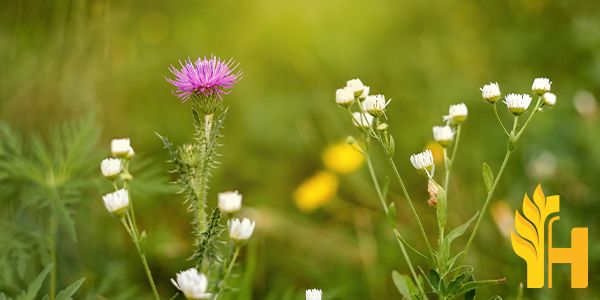Cardus Marianus price

Where to buy and sell Cardus Marianus, lowest (cheapest) and highest price.
check offers buy sell Cardus MarianusToday price for Cardus MarianusCardus Marianus wholesale prices 2022
The Current commodity price of Cardus Marianus per kg, pound in the world in the global markets
Cardus Marianus
Mediterranean milk thistle (Silybum marianum , Cynara cardunculus var.marina) is an annual or biennial plant of the family Asteraceae. This fairly typical thistle has red to purple flowers and shiny pale green leaves with white veins. Originally a native of Southern Europe through to Asia, it is now found throughout the world. This plant is often confused with similar species of thistle that are sometimes called "milk thistles", such as Onopordum acanthium (cotton thistle) or Cirsium vulgare (bull thistle). Milk thistle is regarded as an invasive species in the United States. The plant has a long history of use as a medicinal herb, both because of its strikingly beautiful appearance and because of its efficacy. The seed contains more of liver-protective flavonolignans silymarin and silybin than the leaves or fruit (fruit contains 0.07 to 0.2% silymarin, leaves 1 to 2%, and seeds 5 to 10%). Milk thistle is native to the Mediterranean region but has since been introduced to temperate regions worldwide. It can be found growing along roadsides, in pastures, waste areas, vineyards, and orchards. It prefers moist, well-drained soils but can be found growing in sandy or gravelly soils. The milk thistle is widely grown as an ornamental plant for its conspicuous, large spiny leaves and purple flowers; it typically has self seed in the garden, but not aggressively so. The flower heads are sometimes dried and used in arrangements. The plant is an annual, biennial, or short-lived perennial herb, with a spiny stem 2-4 ft (60-120 cm) high with green to slightly purplish branched spines and sparse, yellowish spines; flower head not compact, hemispherical to cylindrical, 1-1.5 in (3-4 cm) diameter, surrounded by spiny bracts; involucre cylindrical to funnelform, spiny; outer phyllaries with brown margins and stiff papery tips; inner phyllaries oblong, pointed at tip; florets purple (rarely white), tube Milk thistle grows to about 1 meter (3 feet) tall, with smooth leaves and unspun stems. The large flower heads are globe-shaped and bloom in summer to early fall, producing numerous wind-distributed seeds. For more than two centuries, milk thistle has been used as a remedy for liver ailments including hepatotoxicity, cirrhosis, chronic hepatitis, subacute hepatic failure, and other types of liver disease. Silymarin, a compound isolated from milk thistle seeds, is used in herbal medicine to treat these ailments.Global cardus marianus production
Global production of cardus marianus, also known as milk thistle, is concentrated in a few key countries. The majority of the world's supply comes from Hungary, Bulgaria, and India. These three nations account for over 80% of the world's total production. In recent years, global production of cardus marianus has been on the rise. This is largely due to an increase in demand for the herb, as its popularity as a natural remedy grows. As a result of the growing demand for cardus marianus, prices for the herb have also been on the rise. This has caused some farmers in countries like Hungary and Bulgaria to switch to growing the herb, in order to take advantage of the higher prices. The future outlook for the global production of cardus marianus is positive. As more and more people learn about the herb's potential health benefits, demand is expected to continue to grow. This will likely result in higher prices and increased production in the major producing countries.Download our new
Husfarm App
Stay up to date with the current prieces of agricultural products all over the world.
Do you want to sell agricultural products?
Are you an Agricultural processor looking for high-quality products to buy?
Post an ad for FREE!
